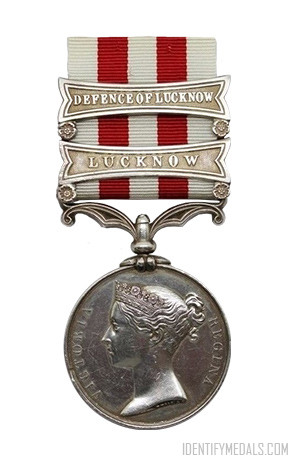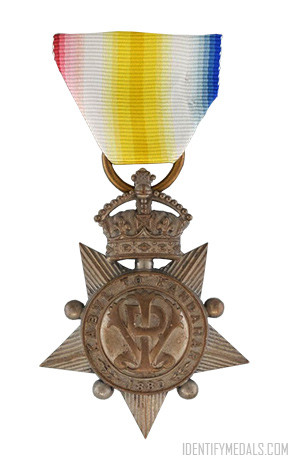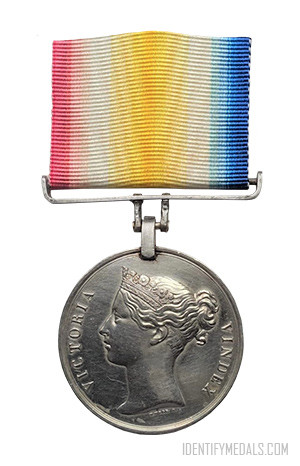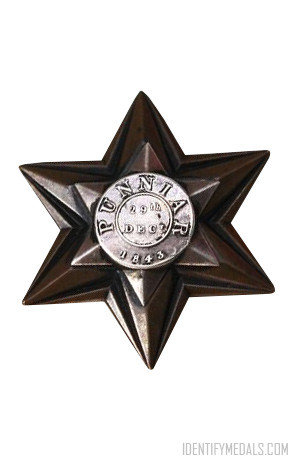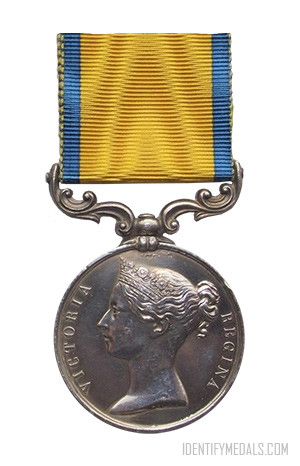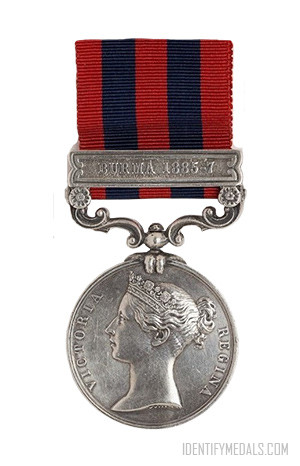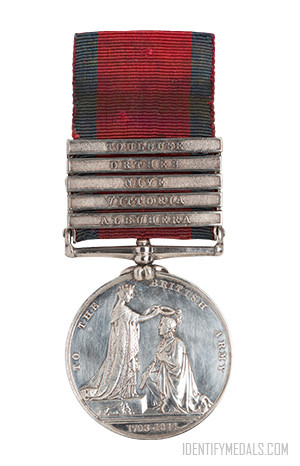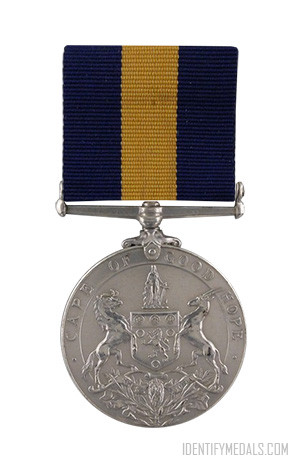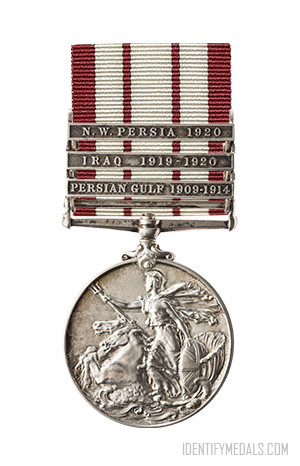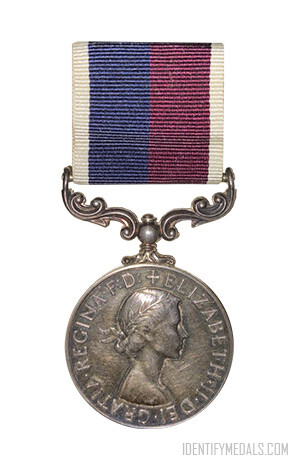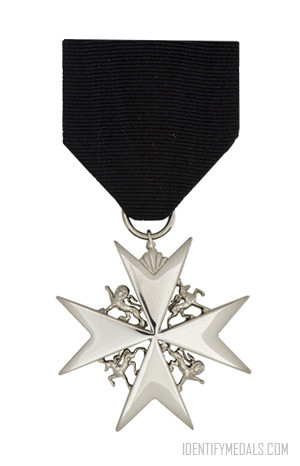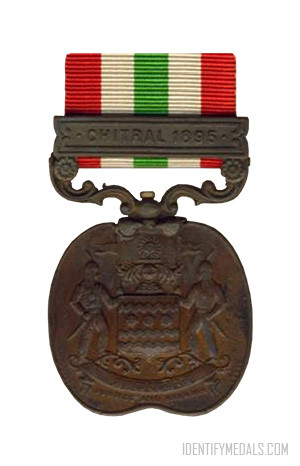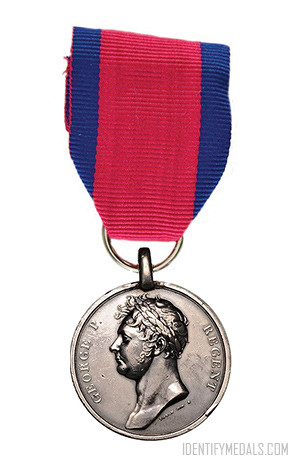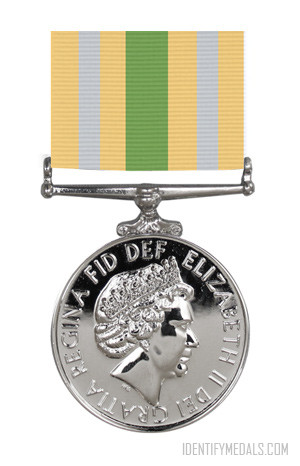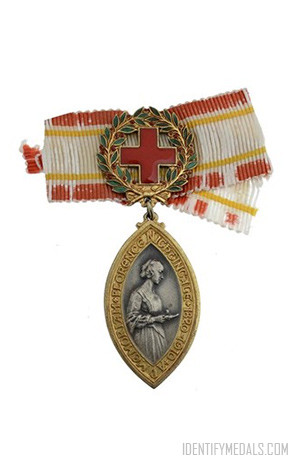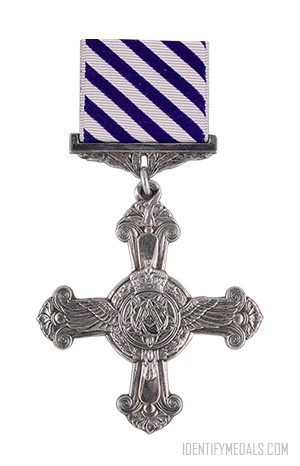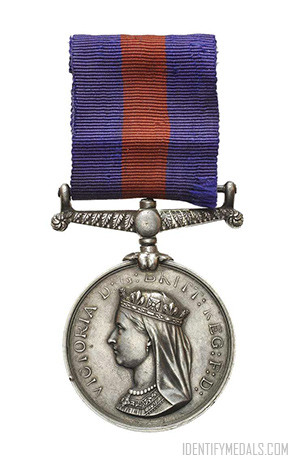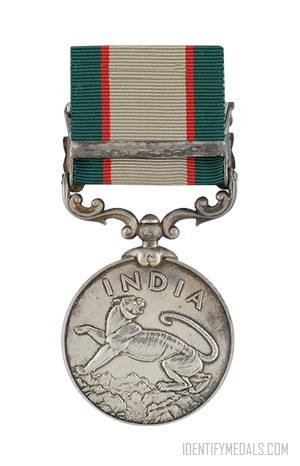- Time Period: Pre-WW1
- Year of Institution: 1858
- Country: Great Britain
The Indian Mutiny Medal is a campaign medal issued to officers and men of British and Indian units who served in operations in suppression of the Indian Mutiny. The medal was approved in 1858.
The Indian Mutiny Medal was initially sanctioned to those troops who had been engaged in action against the mutineers. However, in 1868 it was extended to all those who had borne arms or who had been under fire, including members of the Indian judiciary and the Indian civil service who were caught up in the fighting.
Five clasps were authorized, though the maximum awarded to any one man was four:
- Delhi: 30 May – 14 September 1857. Awarded to troops participating in the recapture of Delhi.
- Defence of Lucknow: 29 June – 22 November 1857. Awarded to original defenders of Lucknow.
- Relief of Lucknow: November 1857. Awarded to the second Lucknow relief force under the command of Sir Colin Campbell.
- Lucknow: November 1857 – March 1858. Awarded to troops under command of Sir Colin Campbell who were engaged in final operations leading to the surrender of Lucknow and the clearing of the surrounding areas.
- Central India: January – June 1858. Awarded to all those who served under Major-General Sir Hugh Rose in actions against Jhansi, Kalpi, and Gwalior.
Around 290,000 Indian Mutiny medals were awarded.
The Indian Mutiny Medal Design
The medal was designed by William Wyon. The reverse was designed by Leonard Charles Wyon, who also engraved the die of the medal.
The obverse shows the diademed head of a young Queen Victoria with the legend VICTORIA REGINA. The reverse displays a helmeted Britannia holding a wreath in her right hand and a union shield on her left arm. She is standing in front of a lion. Above is the word INDIA, with the dates 1857-1858.
The medal measures 1.25 inches (32 mm) wide and the ribbon is white with two scarlet stripes, with each stripe of equal width.

